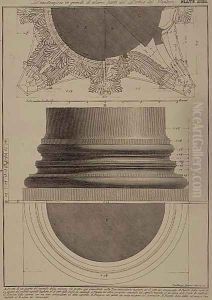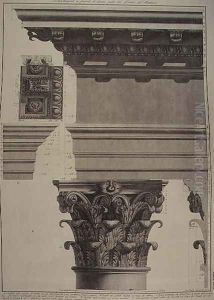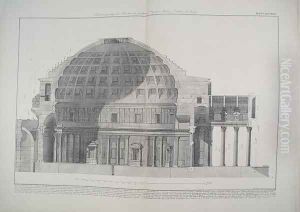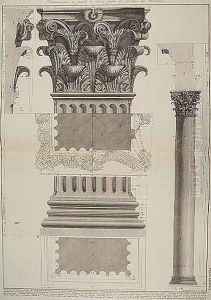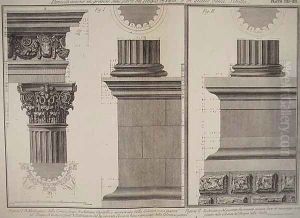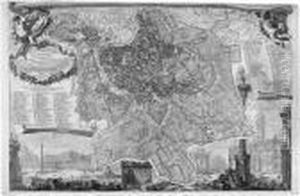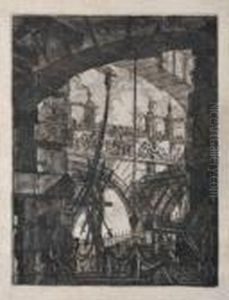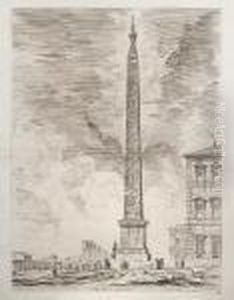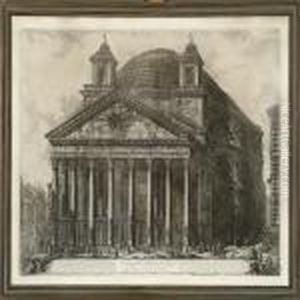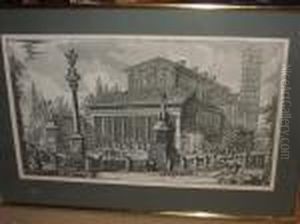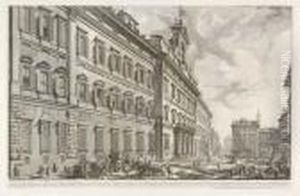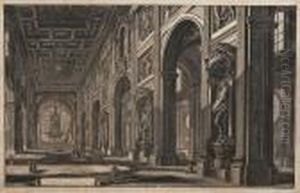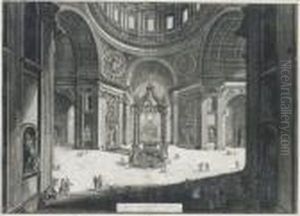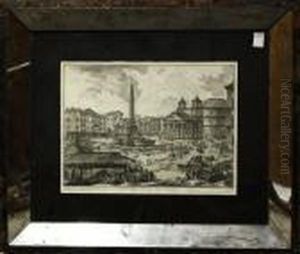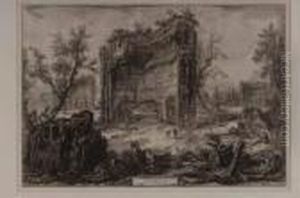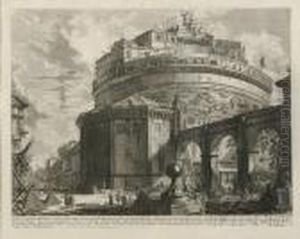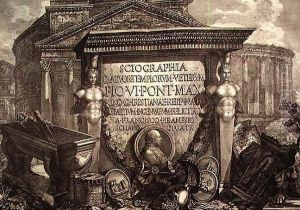





Plate LXXIII-IV Capriccio of architectural ruins and antiquities, illustration for chapter entitled Pantheon and Temples of Vedute, first published in 1756, pub. by E and F.N. Spon Ltd., 1900
-
About Reproduction
Discover the allure of art with our faithful reproduction of "Plate LXXIII-IV Capriccio of architectural ruins and antiquities, illustration for chapter entitled Pantheon and Temples of Vedute, first published in 1756, pub. by E and F.N. Spon Ltd., 1900", originally brought to life by the talented Giovanni Battista Piranesi. Unlike posters or prints, our hand-painted oil painting breathes an unique sense of depth and texture into your space. Every detail, every stroke, and every texture is meticulously recreated, paying the perfect homage to Giovanni Battista Piranesi and his artistic vision.
Owning this piece is more than just decoration - it's a statement of your refined taste in art. Let the vibrant colors and intricate details of this replica serve as a daily reminder of the beauty in our world. Elevate your decor and appreciate the richness of art with our replica of this masterpiece.
-
Painting Description
"Plate LXXIII-IV Capriccio of architectural ruins and antiquities" is an evocative illustration created by the renowned Italian artist and engraver Giovanni Battista Piranesi. This work was first published in 1756 as part of the chapter entitled "Pantheon and Temples of Vedute" and later republished by E and F.N. Spon Ltd. in 1900. Piranesi, celebrated for his intricate and imaginative depictions of Rome's ancient ruins, masterfully combines elements of fantasy and reality in this capriccio, a term used to describe a work of art that blends real and imaginary architectural elements.
The illustration showcases Piranesi's profound understanding of classical architecture and his ability to render it with meticulous detail and dramatic flair. The scene is a fantastical amalgamation of architectural fragments and antiquities, creating a dreamlike vision of the grandeur and decay of ancient Rome. Columns, pediments, and statues are juxtaposed in a seemingly haphazard yet harmonious arrangement, evoking a sense of timelessness and the inevitable passage of time.
Piranesi's work is not merely an artistic endeavor but also an archaeological and historical commentary. His engravings often reflect his deep appreciation for the engineering prowess and aesthetic achievements of ancient civilizations. In "Plate LXXIII-IV," Piranesi's use of light and shadow enhances the three-dimensionality of the ruins, drawing the viewer into the scene and inviting them to explore the intricate details and textures of the stonework.
This illustration is part of Piranesi's larger body of work that includes the "Vedute di Roma" (Views of Rome), a series of prints that capture the essence of Rome's architectural heritage. Piranesi's influence extended beyond the art world, impacting the fields of archaeology, architecture, and even literature. His works remain a testament to his genius and continue to inspire and captivate audiences with their blend of historical accuracy and imaginative vision.
-
Lead Time & Shipping
When you order this oil painting replica, it typically takes 2-3 weeks to paint. If the artwork is more complex, it might need a little more time to ensure the best quality. Once it's ready, we'll send you a photo for your approval. After you give the green light, we'll ship it to you for free.
-
Return & Refund
We believe in the quality of our hand-painted oil painting reproductions, and your satisfaction is our priority. If for any reason, you are not completely satisfied with your purchase, we offer a 45-day return policy. You can return your artwork within 45 days of receipt and receive a full refund. Please note that the artwork must be returned in the original packaging and in the same condition as it was received.





